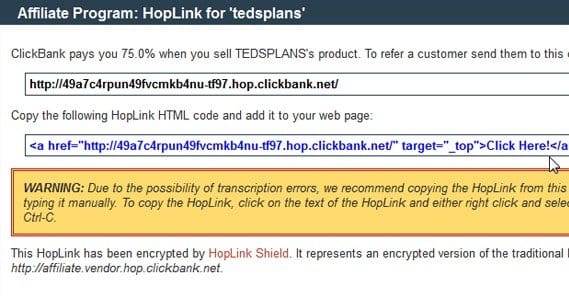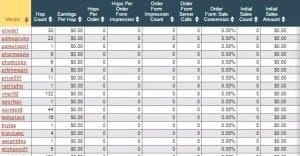15 Ways to Promote Your Clickbank Affiliate Link

Mistake #1 that new affiliate marketers make is to get their first affiliate link and start posting it everywhere online they know. The sites and social groups you frequent aren’t likely to be composed of the kinds of people who want those products. They’re either not interested or too savvy to click through just for you. You’ll never succeed in affiliate marketing this way; you need some better means of promotion.
Make a Quality Authority Niche Site
This is the first and by far the most critical step. Google has a long history of hurting affiliate marketers due to the techniques they use to make money, many of which have been labeled black hat over the years.
These days, to be considered a legitimate affiliate marketer and not a spammer, you need to have a high quality site packed with valuable content, and your affiliate links need to be clearly marked as affiliate links wherever they appear.
A lot of this involves the next tip. More of it involves knowing your products, knowing the people who want to buy your products, and knowing how to attract them. The same, that is, as any marketing.
Write Quality Content
A lot of your traffic as an affiliate will come through organic search traffic, if your site is focused enough, you have a high enough level of quality, you’ve avoided black hat techniques and you earn your ranking.
To earn your ranking, or at least make ranking easier, you should be writing and maintaining a blog. You can do this by buying ghostwritten content or by writing it yourself, just so long as the quality of that content is at least above average. You can’t use duplicated or copied content, you can’t use spun content – at least not for long – and you can’t use low quality content without earning a Google penalty.
You don’t need to post frequently; once per week is enough. Just enough to show that your site is alive and active. You can post more often if you’re focusing a lot of energy on one site, or you can keep it low and spread out through multiple niches on multiple sites.
Google PPC
Google’s PPC advertising through AdWords gives you access to their massive display network. Write ads that point to your site, not to your affiliate links directly. Google doesn’t like displaying affiliate ads directly unless they’re the affiliate. Write and test different ads for different keywords, study the results, optimize, iterate and build advertising schemes. Try to avoid dumping money into fruitless keywords, but don’t be afraid to explore.
Facebook PPC
Facebook’s PPC is the social counterpart to Google’s ads. Through Facebook, you can bring in an incredible amount of targeted traffic. What’s more, you can study the demographics and interests of those users, to learn deeper insights into how your ideal audience ticks. You can use this information in a number of ways, some of which will be discussed later.
Stick to Small Product Niches
If your niche is narrow, you can focus like an arrow to punch through the competition and pull ahead of the rest. If you spread out and keep your site too unfocused, you’ll have all the penetrating power of a pillow. If you find yourself wanting to brand out to unrelated products, develop a new site in a new niche instead.
Include Testimonials
Whenever you sell affiliate products, send a follow-up message a few days later to the people who made the purchase, and ask them about their experiences. If they have glowing praise, ask them if you can use their testimonial on your site to help educate others in the benefits of the products you sell. You can, of course, make up your own testimonials. The problem is, you’d be surprised how hard it is to convince people that a fake testimonial is real.
Write Product Guides
Unless all you’re selling are ebooks, you can probably find some way to create a tutorial in using the products you sell. Even if it’s as simple as using a dietary supplement in conjunction with diet and exercise; just write diet guides and exercise plans. You can always find supplemental material to write and post, which will serve as evergreen guides to attract people who might not even initially want to buy, but who can be convinced to purchase later.
Write Supplementary Material
This is the other side of the coin from evergreen guides. When you’re running a niche site, you need to keep your content utterly focused on the topic at hand. Thankfully, pretty much any topic has a lot of depth. You can cover everything from past controversies, histories of the product development or ingredients, technology behind how it all works, the sky is the limit. Rather than broadening your content base, you’re digging deep to cover every potential angle.
Promote in Industry Communities
Your product is part of an industry, and that industry has communities online. There are blogs, web forums, LinkedIn groups, Facebook pages and Twitter accounts dedicated to that industry. Identify those communities and participate in their discussions. Post your link in your profile, in your signature if they allow it, and occasionally in discussions when possible. In general, try to post links to helpful blog posts rather than your product pages; it comes across less as advertising and more as trying to help.
Use Social Media
Just use it. Even if you’re a narrow affiliate niche, you can find some benefit on Facebook, Twitter, Instagram, Pinterest or Google+. Facebook in particular is essential because of the audience information you gain through Insights. Use a lookalike audience for your PPC to draw in more people.
Rent Email List Space
You can find other industry businesses and partner with them. Pay them for a space in their newsletter, essentially a promoted post. You can’t do this with blog posts, because Google considers it black hat, but you can do it in private email communication, which Google neither indexes nor controls.
Use BuySellAds
BuySellAds in this case is a stand-in for any form of non-Google, non-Facebook off-site advertising. Just buy ad space on related sites and funnel traffic to yours.
Build a Mailing List
That bit above about how Google doesn’t monitor or control your email communication? That’s one great reason why an email list is perfect. You can also use a mailing list for more promotions, returning customers, Facebook growth and a dozen other reasons.
Write Promotional Ebooks
Just because you’re selling an affiliate product doesn’t mean you can’t sell a product of your own as well. Writing ebooks to sell is easy, just expand on the content you’re writing for your blog.
Make Video Offers
Video is criminally underrated amongst affiliate marketing. It’s easy to produce a quick, basic video and post it to the major video hosts, YouTube, Facebook, Vimeo and so forth. Get users to watch your videos, which compel them to investigate your products, which you sell through your landing pages and support through your blog. Working together, your site becomes a conversion machine.
 ContentPowered.com
ContentPowered.com




